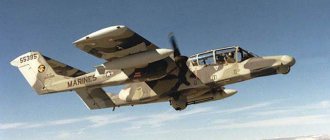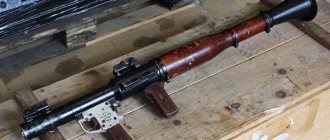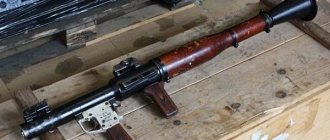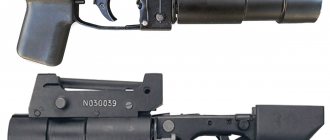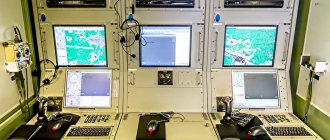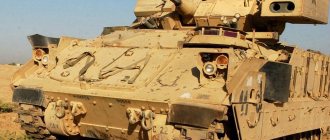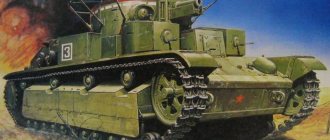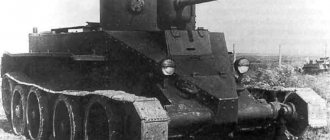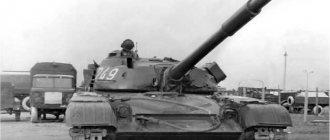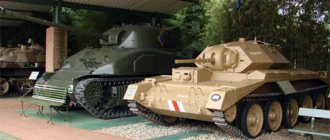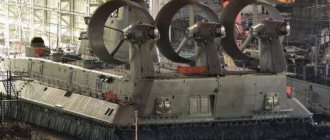For other uses of the term, see Tucano (disambiguation).
| EMB 314/A-29 | ||
| Brazilian Air Force A-29 Super Tucano | ||
| Type | Ground Attack/Counterinsurgency/Training | |
| national origin | Brazil Brazil | |
| Creator | Embraer | |
| First flight | June 1999 | |
| Inserted | 2003 | |
| State | In service | |
| Primary users | Brazilian Air Force US Air Force Chilean Air Force Colombian Air Force Indonesian Air Force Dominican Air Force Ecuadorian Air Force | |
| Production | 2003-present | |
| built | 259 | |
| Unit cost |
| |
| Development | Embraer EMB 312 Tucano | |
| [edit data in Wikidata] | ||
Embraer EMB 314 Super Tucano
("Super Toucan in Portuguese"), also called
ALX
or
A-29
by the Brazilian Air Force, is a turboprop combat aircraft designed for ground attack, counter-insurgency and pilot training, equipped with advanced avionics equipment and weapons systems developed in Brazil. It is used primarily by the Brazilian Air Force, Colombian Air Force and Chilean Air Force. It is also used as a trainer to monitor operations in the Amazon.
Development and design
Brazil needed a light attack aircraft to replenish its air force. The request for the purchase of a light attack aircraft was part of the Brazilian government's SVA (Amazon Surveillance System) project. This aircraft would fly alongside the R-99A and R-99B aircraft currently in service, and would be responsible for intercepting illegal aircraft flights, controlling smuggling, drug trafficking, and patrolling the Brazilian borders.
The ALX project was created then by the Brazilian Air Force, which also had a need for a military training aircraft with high maneuverability, ease of handling and good performance in flight at medium and low altitudes, in order to be able to replace the previous Embraer EMB. 326 GB Xavante. The design of the new aircraft was suitable for the Amazon region, it could withstand high temperatures, humidity and precipitation, and low threats.
The ALX was designed as a straight wing aircraft, with good performance at medium and low altitudes, with a turboprop engine, long range and range, which could carry 3 external fuel tanks, 1 under the central fuselage and 2 under the wings. , which can operate in all weather, night and day, and are capable of landing on short runways that lack basic infrastructure, commercial airports, second-level runways, highways and roads of the Earth.
It has a modern cockpit with digital navigation instruments and a combat computer for launching laser-guided bombs, conventional free-fall bombs and missiles; The domed cabin, designed for good visibility, which is very necessary for low-altitude flights between mountains and deep penetration missions, for attacking enemy territory, opens to the right side so that the crew can enter the cabin on the left. The board is equipped with modern ejection seats with zero speed and zero altitude, comparable to those used in supersonic fighters.
Super Tucano aircraft
June 1999, and the first flight of the two-seat version took place in October 1999.
Benefit
Relatively inexpensive modern A-29 turboprops with a good optoelectronic reconnaissance, surveillance and target designation system, plus a good set of guided weapons suitable for use from elevated altitudes (UAB) are profitable.
It has two crew members with excellent visibility; in the absence of the threat of resistance, it can, with greater convenience than a high-speed fighter, hit targets with cannon and machine-gun fire or unguided rockets (which are now fashionable to be modified into relatively cheap guided ones). If the enemy is caught with a little more teeth, just like with fighters, he can go to a height of several kilometers and use laser- or satellite-guided guided bombs, the accuracy and cost of which do not depend on the platform carrying them.
When loitering at some distance from the line of contact with the enemy, such a platform is practically invulnerable to short-range air defense systems (MANPADS, ZPU), while forcing the enemy, to counter it, to use full-fledged short/medium-range air defense systems - of which a) the number is limited; b) which cannot be pulled too close to the front line because of their vulnerability - from the same artillery and MLRS.
At the same time, there are essentially no restrictions for firing with A-29 AGM-114 Hellfires from a distance of several kilometers. For example, initially in Iraq, the Cessna AC-208B Combat Caravan turboprops carried the main load of air strikes against ISIS units.
The modified OV-10G+ Bronco, and even converted agricultural aircraft involved in low-intensity conflicts, then borrowed from merchants, showed that the concept was quite viable
A-29s can be very effective against various kinds of paramilitary groups, and in the air they can successfully fight UAVs and combat helicopters. Head and shoulders above the latter in terms of climb rate, sustained turn rate and maximum flight speed.
And this is not to mention the simplicity and convenience of expeditionary basing - you can’t really fly a modern fighter from a dirt airfield...
Operators
Operators of the A-29 Super Tucano. A Colombian Air Force A-29 Super Tucano during the 2008 F-Air Airshow.
- Afghan Air Force. 23 in US service. One died in an accident in Baghlan province in 2022, the crew ejected and were rescued [3] and another in Uzbekistan in 2022 due to an in-flight collision with a MiG-29 of the Uzbekistan Air Force, the crew ejected [4]. Ecuadorian Air Force A-29B Super Tucano.
- Angolan Air Force. 6 ordered and in the process of delivery. [ 5 ]
- Brazilian Air Force. 100 in service. [6]
- Air Force of Burkina Faso. 3 planes. [7]
- Chilean Air Force. 24 assets. 2 new units were delivered in September 2022. [ 8 ] [ ]
- Colombian Air Force. There are 24 vehicles in service. 25 were delivered, but one of them crashed on July 11, 2012. These were the first aircraft of this model to enter real combat. All aircraft were delivered in 2008 and replaced the Rockwell OV-10 Bronco. [ 10 ]
- Dominican Air Force. 8 units in operation. Delivery completed in October 2010.
- Ecuadorian Air Force. A total of 18 were received, but one crashed in March 2012. Today, 17 aircraft remain in service.
- US Navy. 1 rented aircraft for testing.
- LAS (Light Air Support) program: 20 aircraft ordered by the US government were delivered and transferred to Afghan aviation. The remaining 8 requested units will remain in the United States for pilot training at Moody's. [ eleven ] [ ] [ ]
- US Air Force. 6 aircraft in the US Special Operations Command. [ 14 ]
- Philippine Air Force. In September 2022, the first 4 units of the 6 originally ordered in 2022 were delivered [15]
- Ghana Air Force. 5 aircraft have been ordered and are in the process of delivery. [ 16 ]
- Indonesian Air Force. 16 units ordered to replace the Rockwell OV-10F Bronco. [ 17 ]
- Lebanese Armed Forces. 6 units are equipped with night surveillance systems.
- Mali Air Force. In 2022, 4 units equipped with night surveillance systems were purchased.
- Mauritanian Air Force. 3 aircraft were introduced. [ 18 ]
- Nigerian Air Force. 12 aircraft were introduced. [ 19 ]
- Air Force of Turkmenistan. They ordered 6 planes. The first 2 were delivered in December 2022 [20]
Counterinsurgency history
The history of the current competition, which has repeatedly changed its name (now settled on “Light Attack/Armed Reconnaissance” - Light Attack/Armed Reconnaissance, LAAR) and goals, goes back more than 10 years. In the mid-2000s, when it seemed that a final victory had already been won in Iraq, but at the same time instability remained, and the campaign in Afghanistan had clearly become protracted, the US military once again thought about the incommensurability of the capabilities and cost of its combat aircraft with the tasks that are placed in front of them. And this is no wonder - a couple of unlucky yesterday’s peasants in a dead pickup truck with a machine gun in the back that still remembers the USSR are simply unable to properly appreciate the fact that they were blown up by a high-precision bomb from a supersonic aircraft, invisible to radar, with a powerful complex of electronic warfare equipment, whose flight for many hours even without taking into account the cost of ammunition was worth a hundred thousand dollars. In addition to spending budget funds, we must also remember that complex equipment wastes resources in low-intensity campaigns.
Stormtrooper_1
A-1 Skyraider attack aircraft
Photo: commons.wikimedia.org/Kogo
The idea of using simpler vehicles for counterinsurgency operations, or, as they now say, low-intensity conflicts, is by no means new. During the Vietnam War, the A-1 Skyraider, created at the end of World War II, showed excellent performance. The US Air Force and Marine Corps actively used the light twin-engine turboprop OV-10 Bronco as light attack aircraft, and the Army used the OV-1 Mohawk as a reconnaissance and target designator. Both cars had a fairly long and successful career, albeit accompanied at times by heavy losses, which ended in the mid-1990s. It is noteworthy that the army would also be happy to openly use the Mohawk as an attack aircraft (they quietly tried), but were constrained by the agreements dividing competencies between the branches of the US Armed Forces - the Key West agreements of 1948 and the Johnson-McConnell agreements of 1966, according to which the army surrendered attack aircraft and transports, and the Air Force responded by abandoning most of its “helicopter” competencies.
Sturmovik_2
OV-1 Mohawk reconnaissance aircraft
Photo: commons.wikimedia.org/Cory W. Watts
However, the Mohawk and Bronco were fairly new aircraft at the time of Vietnam, which were made primarily as reconnaissance spotters - closer to the topic under discussion are the persistent attempts in those years by Cavalier (and later Piper Aircraft) to sell the US Air Force a modernized "counter-guerrilla aircraft" Mustang" from World War II. Despite the failure of the house and the eccentricity of the idea, a small number of Mustangs 2.0 were sold to Bolivia, El Salvador and Indonesia.
A step on a journey of a thousand miles: new US Army missiles
The Pentagon is developing weapons that violate the INF Treaty
Operating history
- On March 1, 2008, a detachment of Super Tucano aircraft from the Colombian Air Force participated in Operation Phoenix into Ecuadorian territory, where Raul Reyes of the FARC-EP was killed. This Super Tucano mission appears to have used Griffin-3 NG-LGB laser-guided bombs and 4×70mm rockets.
- On September 22, 2010, a squadron of Colombian Air Force Super Tucano aircraft again participated in Operation Sodoma, during which Victor Julio Suarez Rojas, nicknamed "El Mono Jojoy", the leader of the FARC organization, was killed.
- They have participated in various surveillance missions, aerial interdiction of aircraft used by drug traffickers, training new pilots from the flight academy, ground training to support combat troops, combating drug trafficking in Ecuador, the Dominican Republic and Colombia. aviation against narcotic crops and air support for combat helicopters, troop transportation and rescue in combat zones.
- On July 11, 2012, a Colombian Air Force aircraft crashed while flying over the municipality of Jambalo, Cauca department, killing two crew members. The causes of the accident have not been established and are still being investigated. Afghan super toucans
- In 2011, the Super Tucano was announced as the winner of the US light air support contract competition, and twenty aircraft were purchased for the Afghan Air Force in 2013. [21] The first four aircraft arrived in the country in January 2016, and the following year they flew nearly 2,000 air raids, about 40 per week, with a record in October, with more than 80 sorties in one week. In 2018, the Air Force fielded 12 A-29s and used the GBU-58 Paveway II bomb in combat, marking the first time the Afghan Army used laser-guided weapons against the Taliban. [22] In August 2022, during the fall of Kabul, some Afghan pilots fled the country with an unknown number of aircraft, including an A-29, and at least one Super Tucano was captured by the Taliban at Mazar-i-Sharif International Airport . [23]
Combat use of EMB-314 Super Tucano turboprop attack aircraft
Turboprop counterinsurgency attack aircraft
. Currently, the most common counter-guerrilla turboprop aircraft are products of the Brazilian company Embraer EMB-312 Tucano and EMB-314 Super Tucano. The EMB-314 Super Tucano aircraft was created on the basis of the EMB-312 Tucano and was designated EMB-312H. The first flight of the prototype took place in 1991. Initially, it was planned to increase engine power, install built-in weapons, and increase flight range. At international arms exhibitions, the EMB-312N was advertised as a turboprop combat aircraft designed to combat light aircraft, helicopters and provide close air support. This modification had an extended fuselage, a strengthened airframe, and a more powerful power plant. But due to increased customer requirements, more profound changes were made to the Super Tucano design. The empty weight of the aircraft increased to 2420 kg, and the length increased by almost one and a half meters.
Turboprop aircraft EMB-312 Tucano and EMB-314 Super Tucano
According to the technical specifications issued by the command of the Brazilian Air Force, the new turboprop combat aircraft had to have a long flight range and autonomy, the ability to operate day and night in any weather conditions and the ability to be based on poorly prepared unpaved airfields with minimal maintenance.
The service life of the EMB-314 Super Tucano airframe has been increased to 14,000 hours with the possibility of extension for another 4,000 hours. On the EMB-312, the assigned airframe life is 8000 hours. Serial production of the EMB-314 Super Tucano began in 2003. This machine differed from the earlier model in a new cockpit canopy, improved avionics using liquid crystal displays and the ability to use night vision devices. In addition to inertial navigation systems, a satellite navigation receiver was introduced into the avionics. The cabin and the most vulnerable structural elements are covered with Kevlar armor barriers that hold armor-piercing rifle bullets fired from a distance of 300 m. When operating in a zone of strong air defense, it is possible to reinforce the sides of the cabin with ceramic plates, but this reduces the weight of the combat load by about 200 kg. The windshield armored glass is capable of withstanding a collision with large birds at a speed of 500 km/h. Fuel tanks are protected and filled with neutral gas. The crew's rescue is provided by Martin Baker Mk 10 LCX ejection seats.
Engine Pratt & Whitney Canada PT6 A-68C 1600 hp. provides a maximum speed of 590 km/h in horizontal flight. Cruising speed - 508 km/h. The aircraft of the previous model, EMB-312 Tucano, with an EMB-312 power plant with 750 hp. could reach a speed of 458 km/h. The plane is capable of staying in the air for more than 8 hours. Ferry flight range is 2500 km. Combat radius with a load of 1500 kg is 550 km. Normal take-off weight is 2890 kg, and maximum take-off weight is 3210 kg. The Super Tucano is capable of operating in conditions of high temperature and humidity, and has good takeoff and landing characteristics, which allows it to be based on unpaved runways of limited length.
Compared to the EMB-312 Tucano, the EMB-314 Super Tucano's armament has been significantly enhanced. Two 12.7 mm FN Herstal M3P machine guns with a rate of fire of 1100 rounds per minute are installed in the wing. Ammunition - 200 rounds per barrel. There is also a suspension for a 20 mm GIAT M20A1 cannon and four containers with 7.62-12.7 mm machine guns. Five external nodes can accommodate weapons with a total weight of up to 1550 kg: NAR units, bombs and cassettes weighing up to 250 kg, guided weapons. To use guided weapons, a data display system is installed on the pilot’s helmet, integrated into the aircraft’s weapons control equipment. The system is based on the MIL-STD-553B digital bus and operates according to the HOTAS (Hand On Throttle and Stick) standard.
Thanks to the addition of AIM-9L Sidewinder, MAA-1A Piranha and Python 4 air combat missiles, the Super Tucano is capable of conducting defensive air combat with jet fighters. The capabilities to combat helicopters and light aircraft have expanded. To counter heat-seeking missiles and jam the radar, there are automatic weapons for shooting heat traps and dipole reflectors.
Thanks to its versatility, relatively low cost and low operating costs, the EMB-314 Super Tucano is today's best-selling light turboprop combat aircraft. As of 2022, more than 250 Super Tucanos have been delivered to customers. In 2009, a competition was announced in the United States for the supply of 100 light counterinsurgency attack aircraft. In addition to the EMB-314 Super Tucano, it featured an AT-6B Texan II offered by Hawker Beechcraft.
AT-6B Texan II
The AT-6B Texan II light attack aircraft made its first flight on April 5, 2010. This vehicle is an armed modification of the two-seat T-6 Texan II, which, in turn, was created on the basis of the Swiss Pilatus PC-9. The AT-6B Texan II is equipped with a Pratt & Whitney Canada PT6A-68D turboprop engine with a power of 1600 hp. Maximum flight speed is 580 km/h. Cruising speed - 426 km/h. Empty weight – 2671 kg. Maximum take-off weight - 4536 kg. Weapons with a total weight of up to 1319 kg can be suspended on seven external nodes. The aircraft is equipped with a head-up display, multi-function displays and an L-3 Wescam Mx-15Di electro-optical infrared camera. Provision is made for the installation of protection equipment against IR and laser seekers for ground-to-air and air-to-air missiles, a radar warning system and an automatic IR trap shooter. The aircraft has an ALQ-213 electronic warfare control system, an ARC-210 secure radio communication system, and digital data transmission equipment.
In 2012, the Super Tucano was declared the winner of the competition, but Hawker Beechcraft appealed and the results were invalidated. However, repeated testing in 2013 confirmed the superiority of the EMB-314 Super Tucano, and the US Department of Defense issued an initial contract for the purchase of 20 aircraft with a total cost of $427 million. In addition to turboprop attack aircraft, the purchase of consumables and spare parts was envisaged.
The main reason for the EMB-314 Super Tucano's victory over the AT-6B Texan II, in addition to the lower purchase price, was lower operating costs and higher payload weight. At the same time, American-assembled Super Tucanos must be equipped with radio-electronic equipment similar to that installed on the AT-6B Texan II. The possibility of night use and the use of light precision-guided ammunition is specifically discussed, which should increase the strike potential of attack aircraft. At the same time, despite losing the competition announced by the US Air Force, Hawker Beechcraft, simultaneously with the sale of the T-6 Texan II trainer, is discussing the possibility of supplying the AT-6B to Mexico and Argentina.
To facilitate the Super Tucano's access to the market of US allies, the American company Sierra Nevada Corporation (SNC) and the Brazilian Embraer organized a joint production of turboprop aircraft. At the same time, the cost of one aircraft assembled at a plant in Jacksonville, Florida, was more than $18 million in 2022. Foreign pilots are trained by instructors of the 81st Fighter Squadron of the US Air Force at Moody Air Force Base in Georgia.
Google Earth satellite image: A-29 Super Tucano aircraft at Moody Air Force Base
In the American armed forces, the turboprop attack aircraft was designated A-29 Super Tucano.
Two modifications are known: - A-29A: a single-seat aircraft, on which an additional 400-liter fuel tank is installed in place of the second crew member. This aircraft is mainly designed to strike ground targets using unguided aircraft munitions, intercept light aircraft, and combat helicopters and unmanned aerial vehicles. According to Embraer, the single-seat A-29A with a search outboard container that detects thermal radiation, thanks to its increased flight range, has proven itself to be an excellent night fighter when intercepting light smugglers' aircraft;
— A-29B: a two-seat version in which the weapon operator, using an overhead optoelectronic station and a side-view radar, can search for air and ground targets in the dark. This model has expanded the capabilities for using precision-guided ammunition. The A-29B has proven itself very well in combat operations in Colombia and Afghanistan.
A-29A Super Tucano of the Brazilian Air Force
As of the second half of 2022, A-29A and A-29B aircraft were purchased by Angola, Afghanistan, Brazil, Burkina Faso, Ghana, Honduras, Dominican Republic, Indonesia, Colombia, Lebanon, Mali, Mauritania, Nigeria, Senegal, Turkmenistan, Chile, Philippines. In addition, several A-29s are available to the US Air Force Special Operations Command.
A-29B Super Tucano of the Nigerian Air Force
As of 2022, approximately 200 EMB-314 Super Tucano attack aircraft have logged more than 150,000 flight hours, including 22,000 hours in combat missions. Thanks to high maneuverability, low thermal signature and good survivability, the aircraft have proven themselves to be excellent during combat missions. Not a single turboprop attack aircraft was lost to anti-aircraft fire. However, in a combat zone, Super Tucanos do not always perform strike functions; they are often used as reconnaissance and surveillance aircraft.
Although the Super Tucano was adopted into service in most operating countries relatively recently, this aircraft already has serious experience in combat use. The Brazilian Air Force received 99 aircraft worth a total of $214.1 million: 33 single-seat A-29A and 66 double-seat A-29B.
A-29B Super Tucano of the Brazilian Air Force
Thanks to the presence of a second crew member serving as a weapons operator and observer pilot, the two-seat A-29B is optimal for use in armed reconnaissance operations. At the same time, the Super Tucano was used as part of the Amazon control system SIVAM (Sistema para Vigilancia de Amazonas) together with other reconnaissance and attack aircraft.
On June 3, 2009, two Super Tucanos of the Brazilian Air Force, guided by commands from an EMB-145 AEW&C AEW aircraft, intercepted a Cessna U206G aircraft with illegal cargo from Bolivia in the Alta Floresta d'Este area. After warning bursts from 12.7-mm machine guns were fired at the Cessna's course, the smugglers' plane landed at Cocoal Airport. Two crew members tried to escape, but were detained by the police. On board was 176 kg of concentrated cocaine paste, which was enough to make almost a ton of cocaine.
As part of the fight against criminal activity in the Amazon, Operation Agata began on August 5, 2011. More than 3,000 military and police took part in the operation, 35 airplanes and helicopters, and several armed boats were involved. For 30 days, measures were taken to suppress illegal logging of valuable timber, mining and trade in rare species of animals. Drug factories and drug storage sites were destroyed. A-29 Super Tucano aircraft dropped 227-kg Mk 82 bombs to destroy drug traffickers' targets. At the same time, the search for targets and the targeting of attack aircraft were carried out from Israeli-made Hermes 450 drones.
On September 15, 2011, Operation Agata-2 was launched on the border with Uruguay, Argentina and Paraguay. During its course, the Super Tucano destroyed three airfields in the jungle and, together with F-5E/EM fighters, intercepted 33 planes transporting drugs. Brazilian security forces managed to seize 62 tons of drugs, make more than 3,000 arrests and seize more than 650 tons of weapons and explosives.
On November 22, 2011, Brazil launched Operation Agata 3 in areas bordering Bolivia, Peru and Paraguay. It involved 6,500 people, supported by 10 armed river boats, 200 vehicles and armored vehicles, and 70 aircraft. Agata 3 was the largest Brazilian special operation involving the army, navy and air force to combat illegal human trafficking and organized crime in the border area. In addition to the A-29A/B, AMX combat aircraft, F-5 Tiger II, EMB-145 AEW&C AWACS aircraft and UAVs took part in the operations. After the end of the Agata special operations, a representative of the Brazilian Ministry of Defense reported that as of the beginning of 2011, 1319% more drugs were seized than in the previous six months.
Currently, Super Tucanos make regular patrol flights over remote areas of Brazil. To increase the efficiency of patrolling, aircraft in most cases carry containers with reconnaissance equipment made in America and France. In 2014, it became known that some of the Brazilian A-29Bs use a compact side-view radar capable of detecting groups of armed people and vehicles hidden under treetops. Of the 99 aircraft received by Força Aérea Brasileira, four were lost in flight accidents.
In 2005, Colombia signed a contract worth $234 million for the supply of 25 A-29B Super Tucanos. All aircraft were received between December 2006 and June 2008. During the same period, the United States provided precision-guided aircraft munitions as part of its military assistance.
A-29B Super Tucano of the Colombian Air Force
The first combat flight of the Colombian Super Tucano took place on January 18, 2007.
On this day, the A-29B squadron dropped a 227-kg Mk 82 bomb on the positions of the Revolutionary Armed Forces of Colombia (FARC). In 2008, during Operation Phoenix, a Colombian Air Force Super Tucano armed with Griffin laser-guided bombs struck a target in Ecuador. At the same time, a group of militants was destroyed, among whom was FARC Deputy Commander-in-Chief Raul Reyes. This event led to a diplomatic rift between the two countries. On September 21, 2010, Operation Sodom began, during which two A-29B squadrons dropped 7 tons of bombs on a FARC camp where about 700 fighters were located. After the airstrike, Colombian special forces landed from helicopters. As a result, the guerrillas retreated, leaving more than 20 dead in the camp, among whom were leaders of the FARC movement. In October 2022, during Operation Darién in the Chocó department, crews of turboprop attack aircraft used infrared cameras at night to detect groups of insurgents and attacked them with 70 mm laser-guided missiles.
On October 15, 2011, the Colombian armed forces launched a major counter-insurgency operation, Operation Odysseo. In addition to other combat aircraft, close air support was provided by 18 Super Tucanos loaded with 113 and 227 kg bombs. Five aircraft were used to deploy 500-pound adjustable bombs. At the end of 2011, the Colombian army managed to inflict heavy losses on the guerrillas. During Operation Odisseo, the leader of the Revolutionary Armed Forces of Colombia, Alfonso Cano, was killed.
At dawn on February 22, 2012, A-29Bs dropped guided bombs on a FARC camp 15 km north of Bojay, near the Panama border. Operation Frontera killed six rebels, including Pedro Alfonso Alvarado (alias Mapanao), who was responsible for the 2002 Bojaya massacre in which 119 civilians were killed.
In the early hours of March 21, 2012, during Operation Pharaoh, five Super Tucanos bombed a FARC base in Arauca, near the Venezuelan border, killing 33 rebels. Five days later, during Operation Armageddon, nine turboprop attack aircraft attacked a forward fortified guerrilla outpost in the Vista Hermosa area. Within three minutes, thirty-six 227 kg aerial bombs were dropped on the target. At the same time, the attacked facility was completely destroyed, 36 rebels were killed.
At the end of May 2012, six A-29Bs fired rockets at a National Liberation Army (ELN) camp located near Santa Rosa in the department of Bolivar. On May 31, 2012, a bombing of an ELN camp in a remote area of the Chocó department killed seven militants.
On June 6, 2012, during a bombing of a FARC facility located in the northern department of Antioquia, five Super Tucanos dropped a 227 kg bomb, killing 12 rebels.
In September 2012, turboprop attack aircraft identified insurgent targets and provided close air support during Operation Omega, during which more than 20 guerrillas were killed and four captured. Several commanders were among the dead. At the same time, Colombian military intelligence believes that the rebels suffered heavy losses, but managed to bury a significant part of the fighters killed during the bombing.
The successful actions of government forces, supported by precise and effective airstrikes from turboprop combat aircraft, led to the loss of the former position of the FARC and ELN, whose militants previously controlled about half of the country's territory. As a result, the surviving rebel leaders announced their renunciation of armed struggle and the beginning of negotiations with the government. In 2012, FARC representatives announced that one Super Tucano was shot down by anti-aircraft fire. However, during an examination of the wreckage of the aircraft carried out by specialists from Fuerza Aérea de Colombia and representatives of Embraer, no combat damage was found.
Google Earth satellite image: T-27 Tucano and A-29B Super Tucano aircraft at Apiay Air Base
Currently, the Colombian Air Force has 24 A-29B Super Tucano aircraft.
Turboprop attack aircraft are stationed at three air bases and are used for patrol flights and suppression of drug trafficking. In 2010, Embraer announced the completion of a contract to supply eight A-29Bs to the Dominican Republic. The aircraft were intended for pilot training, homeland security, border patrol and combating drug trafficking. To control the country's airspace and guide interceptors to targets, radar posts were deployed at the international airports of Las Americas and Punta Cana.
A-29B Super Tucano of the Dominican Republic Air Force
Soon after Dominican Super Tucanos began scrambling to intercept aircraft illegally invading the country's airspace, the number of air border violations dropped by more than 80%. In May 2012, Dominican Republic President Leonel Fernandez ordered the armed forces to send the Super Tucano to fight drugs in Haiti.
The Ecuadorian Air Force has had 10 A-29B Super Tucanos since May 2010. Two squadrons are stationed at Manta airbase in the west of the country. The aircraft of one squadron are used to improve the training and maintain the flying skills of pilots, and the second is an attack squadron and is used to fight insurgents in the jungle. In this role, they replaced the extremely worn-out A-37 Dragonfly attack aircraft.
Google Earth satellite image: A-29B Super Tucano aircraft at Manta airbase
Currently, Super Tucanos are actively fighting in Afghanistan. In 2011, the A-29B Super Tucano light turboprop attack aircraft won the competition for a light combat aircraft, which was supposed to replace Russian-made combat helicopters in the Afghan Air Force. Funds for this were allocated by the American government. The cost of one A-29 is about $18 million.
A-29B Super Tucano Afghan Air Force
In December 2016, Afghanistan received 8 two-seat A-29B attack aircraft. In 2022, 20 aircraft were transferred to the Afghans. According to reference data, at the beginning of 2022, the Afghan Air Force had 26 Super Tucanos. Delivery of 6 more aircraft is expected in the near future. The A-29B Super Tucano, assembled for the Afghan Air Force in Jacksonville, America, is equipped with very advanced avionics and is superior in this regard to aircraft built in Brazil. To reduce vulnerability from anti-aircraft fire, emphasis is placed on the use of guided weapons. The aircraft is equipped with avionics and information display equipment from the Israeli company Elbit Systems and targeting and search systems manufactured by Boeing Defense, Space & Security. When using guided munitions, data display equipment on the pilot’s helmet, integrated into the aircraft’s combat control system, is used. The system is based on the MIL-STD-553B digital bus and operates according to the HOTAS (Hand On Throttle and Stick) standard. It is reported that some of the Afghan A-29Bs are equipped with an overhead radar created by OrbiSat. The radar is capable of operating against air and ground targets and detecting single mortar positions with high probability. There are also inertial and satellite navigation systems and closed-circuit communications equipment on board.
The first combat missions of Afghan A-29Bs took place at the beginning of 2017. As new aircraft arrived and were mastered by flight and technical personnel, the intensity of combat sorties increased. Already in the spring of 2022, “Super Tucano”, striking Taliban positions, carried out up to 40 sorties a week.
According to information released by the Afghan Air Corps in July 2017, turboprop attack aircraft have completed more than 2,000 airstrikes without loss. They provided close air support to ground forces and destroyed militant targets. In March 2022, the GBU-58 Paveway II guided bomb was used for the first time from an Afghan A-29B Super Tucano against Taliban positions.
Afghan A-29B Super Tucano with GBU-58 Paveway II guided bomb
“Super Tucanos” turned out to be a good replacement for Mi-35 helicopters. An important factor is that the A-29B, unlike helicopters, easily overcome mountain ranges while carrying the maximum combat load. A significant advantage of turboprop attack aircraft is better fuel efficiency and a relatively low cost per flight hour, which in 2016 was approximately $600. At the same time, the cost of a flight hour for the Mi-17V-5 transport and combat helicopter exceeded $1,000, while that of the Mi-35 was close to $2,000. Considering that aviation fuel is delivered to Afghan air bases by military transport aircraft or road convoys, which require strong security to escort them, fuel efficiency is very important. The preparation time for the Mi-35 for a second combat mission takes much longer than that of the Super Tucano. Separately noted is the ability of the A-29B to operate successfully in the dark, which was extremely problematic for the Afghan Mi-17V-5 and Mi-35.
Thus, the A-29B, with similar or even higher combat effectiveness in Afghanistan, turned out to be more economically profitable than a heavy attack helicopter.
The ending follows...
Characteristics
General characteristics
- Crew:
1 (A-29A), 2 (A-29B). - Length:
11.33 - 37.17 feet - Wingspan:
11.14 m 36.55 ft - Height:
3.97m 13.02ft - Empty weight:
3020 6658 lbs - Curb weight:
4520 kg 9965 lbs. - Maximum takeoff weight:
5,400 kg 11,464 lb - Planta engine:
1 Pratt & Whitney Canada PT6A-68C turboprop.
Power:
1193 kW 1600 hp
1 × Hartzell HC-B5MA-2 with 5 blades per engine.
Performance
- Maximum operating speed (V no):
654 km/h (320 knots, 406 mph) - Stall speed (Vs):
148 km/h (92 mph, 80 kn) - Range:
4820 (2995 miles) - Service ceiling:
10,670 35,008 ft - Ascent Speed:
24 m/s 79 ft/s
Armament
- Missile armament:
Internal (located on the wings): 2 × 12.7 - mm FN Herstal M3P machine gun with 200 rounds of ammunition and a frequency of 950 rounds per minute
- 1 × 20 mm GIAT M20A1 automatic cannon in a container under the fuselage.
It can carry 1,500 kg of external weapons at five hardpoints under the fuselage and wings, including a wide range of air-to-ground missiles such as the AGM-65 Maverick, as well as rockets and guided bombs. It can also be armed with air-to-air missiles, such as the AIM-9 Sidewinder, MAA-1 Piranha and Python 3 or 4, for interdiction and possible downing of aircraft or helicopters as part of counter-narcotics trafficking operations and other illegal activities. activities.
- Pumps:
Conventional pumps: (5x) Mk 81 - (5x) Mk 82
- (2x) M-117
- BNTs-300
- BLG-252
- FPG-82
- Chaff & Flares (countermeasures)
- Air-to-air missiles: Sidewinder AIM-9L
- AGM-65 Maverick
Avionics
- MIL-STD-1553
- NVG ANVIS-9 (night vision)
- CCIP/CCRP/CCIL/DTOS/LCOS/SSLC (Computerized Attack Modes)
- R&S{RT} M3AR VHF/UHF on-board transceiver (two-way encryption)
- SKIN / HOTAS
- HMD with UFCP (front control panel)
- Laser INS with GPS navigation system.
- CMFD (color multifunction display) liquid crystal active matrix
- Integrated radio and navigation
- Camcorder
- Autopilot with mission planning capabilities.
- Stormscope WX-1000E (airborne weather mapping system)
- Laser rangefinder
- WiPak
References
- https://www.strategypage.com/htmw/htairfo/articles/20090427.aspx
- "Archival copy". Archived from the original on November 18, 2007. Retrieved September 23, 2011
- Super Tucano accident in Afghanistan
- The Diplomat, Franz-Stefan Gadi, The. "Confirmed: First four A-29 light attack aircraft arrive in Afghanistan". Diplomat
(en inglés estadounidense). Consultado el 18 de Enero de 2017. - "Brazil provides loan for sale of six military aircraft" (in Portuguese). RTP,
November 23, 2011 - "FAB receives Embraer's 100th A-29 Super Tucano" (undefined). fab.mil.br
(in Portuguese). June 9, 2009. Archived from the original on September 28, 2011. Retrieved September 29, 2022 - Fernando Valduga (September 7, 2011). "EXCLUSIVE: Three Super Tucanos photographed on flight to Burkina Faso". cavok.com.br
(in Portuguese). Retrieved September 29, 2022 - "Embraer sells Super Tucano to Chilean government". sheet online. Consultation August 16, 2008
- https://aviacionline.com/2020/09/embraer-entrega-a-29b-super-tucano-a-chile-y-filipinas/
- "Embraer delivers last of 25 Super Tucanoe to Colombia" (unspecified). Spectator
. August 11, 2008. Retrieved March 24, 2009 - "Warplanes: Blackwater buys Brazilian bombers". Strategy page
. August 27, 2007. Retrieved September 29, 2022 - "The Penny Drops: COIN Aircraft for Blackwater?" . Defense Industry Diary
. August 30, 2007. Retrieved September 29, 2017 - "Report: Blackwater Worldwide buys Brazilian-made fighter jet". FoxNews
. _ June 2, 2008. Retrieved September 29, 2022 - Citation error: Invalid label; the content of the links being called is not definedWorld Air Forces 2021
- https://aviacionline.com/2020/09/embraer-entrega-a-29b-super-tucano-a-chile-y-filipinas/
- {{news quote | https://www.defensa.com/index.php?option=com_content&view=article&id=14748:ghana-confirma-la-compra-a-embraer-de-5-aviones-super-tucano&catid=55:latinoamerica&Itemid=163 Ghana confirms purchase of 5 Super Tucano aircraft from Embraer]
- ↑ Dickie Christanto (January 24, 2010). "Air Force to acquire 16 Super Tucano fighters". TheJakartaPost._
_ _ Retrieved September 29, 2022 - Embraer Defense and Security delivers first A-29 Super Tucano to Mauritania
- The first A-29 Super Tucano of the Nigerian Air Force makes its first flight
- Parten de Brasil - the first Super Tucanos... ]
- Super Tucano beats AT-6 in Afghan light air support tender
- Afghan A-29 drops first laser-guided bomb on Taliban
- The Taliban have access to US military aircraft. What happens now?
